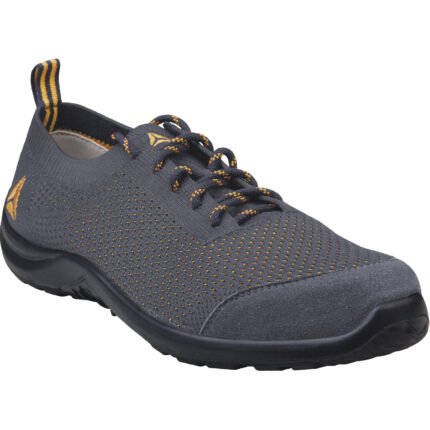
Norms
REGULATION (EU) 2016/425
-EN ISO 20344:2011 : Personal protective equipment - Test methods for footwear
-EN ISO 20345:2011 : Personal protective equipment - Safety footwear.
-Additional special requirements : S3
-Slip resistance : SRC
-EN61340-5-1:2016 : Electrostatic : Part 5-1 : Protection of electronic devices from electrostatic phenomena – General requirements ( ESD control footwear ) + EN IEC 61340-4-3 : 2018 - Part 4-3: Standard test methods for specific applications - Footwear
-Electrostatic charge dissipation performance. : ESD control footwear
-Electrostatic charge dissipation performance - Class 1 : ESD control footwear
HIGHLIGHTS
RISK OF ELECTROSTATIC DISCHARGE (ESD*)
Static electricity present on operators must be controlled in the following areas of use, as it can :
- damage materials to sensitive electric shock: various electronic and electrical industries ...
- generate particles likely to be deposited on the paint : automotive industry, household appliances ...
The purpose of ESD control is to protect the electronic equipment being handled and not the wearer.
* Electrostatic Discharge.
What does the regulation say?
The requirements for the design, establishment, implementation and maintenance of electrostatic discharge control devices (ESD) that can damage electronic components are defined by standard EN61340-5-1.
The device called “ESD" is used to control electrical discharges for manufacturing, processing, assembly, packaging, maintenance, testing, inspection, transport or handling of electrical or electronic parts, assemblies and equipment that may be damaged by electrostatic discharges.
To be usable in an ESD device, a shoe must at least be qualified according to the test methods of EN IEC 61340-4-3 and offer an electrical resistance lower than 10⁸ Ω.
SAULT2 ESD, VIAGI ESD, MIAMI ESD and MEMPHIS ESD meet this level of resistance required for compliance. These shoes, thanks to their low electrical resistance, limit the risk of electrostatic discharge..









































